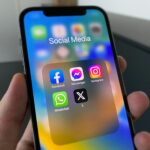The importance of getting enough sleep is undoubtedly nothing to snooze on – its effects impact all aspects of our health. Many Americans, however, say they’re not getting enough sleep.
The global insomnia market is big business, reportedly worth billions, and likely to grow in the coming years. Seeking to take stock of the sleep market in the U.S., CivicScience took a quick look at current consumer trends, including the most popular sleep devices and intent to purchase.
How many turn to white noise machines or meditation apps?
Seeking advice and treatments from a doctor is essential, but Americans are also looking to household items to assist them in catching those all-important z’s.
A recent CivicScience poll assessed six non-medicinal sleep interventions available on the market, finding that 47% of U.S. adults report they use one or more to help them sleep (n=3,333). Fans make up the highest percentage at 61%. White noise apps or machines come in a distant second at 26%, while just 9% are likely to use meditation apps.
Americans are sleeping less but how does that affect their purchasing plans?
Ongoing CivicScience data tracking the average sleep per night show Americans say they’ve been sleeping slightly less since August 2022. People getting 6-8 hours of sleep retain the highest percentage among U.S. adults (49%), though that percentage has fallen two percentage points since August. Meanwhile, at the other end of the spectrum, the number of people who get under 4 hours per night ticked slightly higher to 6% from 4% in August.
The remedy for sleep struggles is more than one purchase away; many factors can contribute, and a doctor’s consultation is often required. Still, people getting the least amount of sleep also show they’re the most motivated to make upgrades where possible. Maybe a new mattress? Overall, the latest CivicScience polling finds 27% of U.S. adults intend to make a purchase to help improve their sleep.
A majority of people sleeping under 4 hours a night (56%) have a purchase in mind for their bedroom or sleeping environment to improve their sleep within the next six months. The 4-6 hour per night crowd eyes an upgrade for better sleep as well.
Highlighting the value we place on sleep, even 31% of people who get more than 10 hours a night expect to make a purchase to improve their copious amount of nightly sleep.
Sleep affects us in a variety of ways in our lives. With Americans saying they get less sleep, they’re turning down multiple avenues to address the issues. Whether it’s sleeping with a fan on or making a purchase to upgrade to their sleeping environment, it’s clear we’re not entirely resigned to poor sleep. But how will these trends evolve as we move deeper into the new year? CivicScience will continue to monitor and watch for any patterns that emerge.
In this economic environment, the last thing your company needs is to be caught napping. CivicScience’s insights can help you stay ahead of the changing times so you’ll always be able to track trends for your consumers. Work with us.








